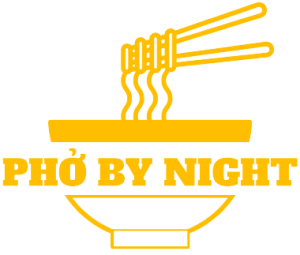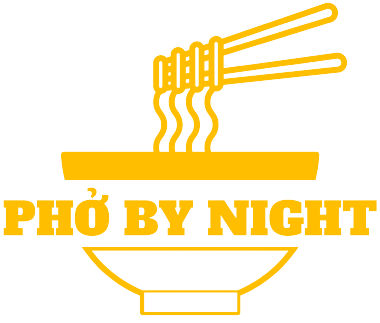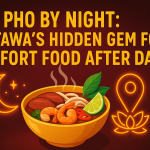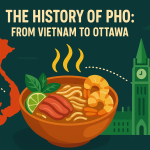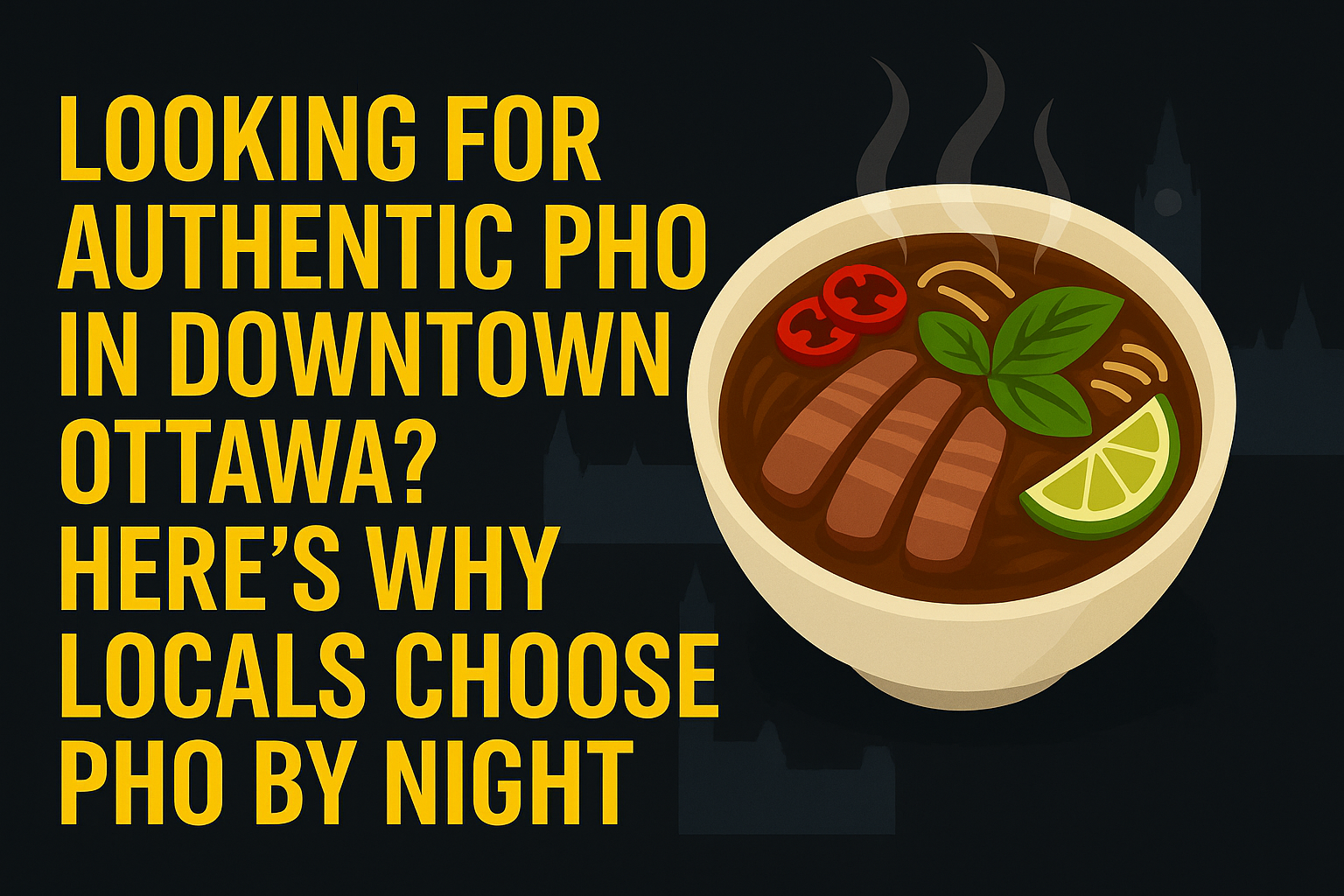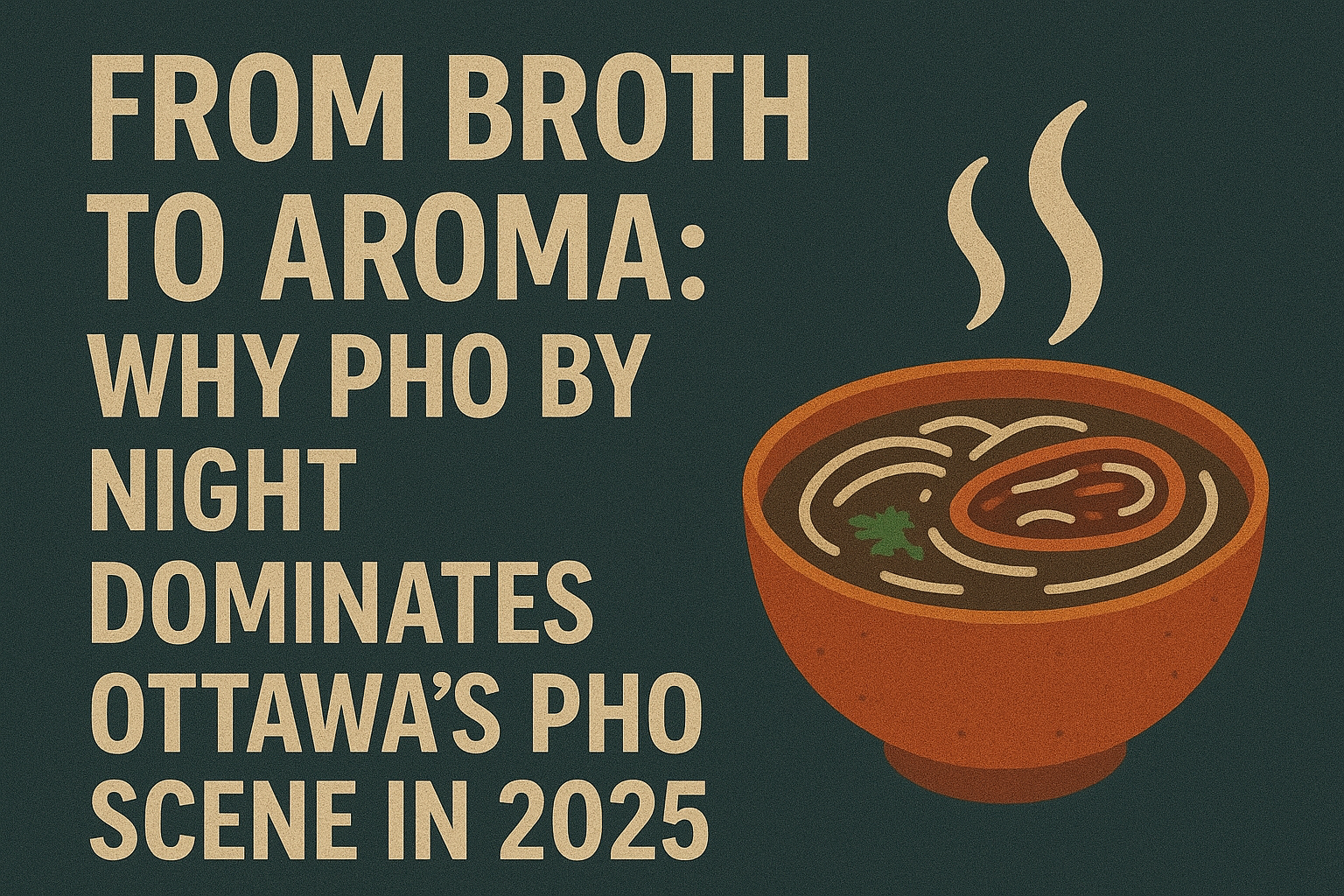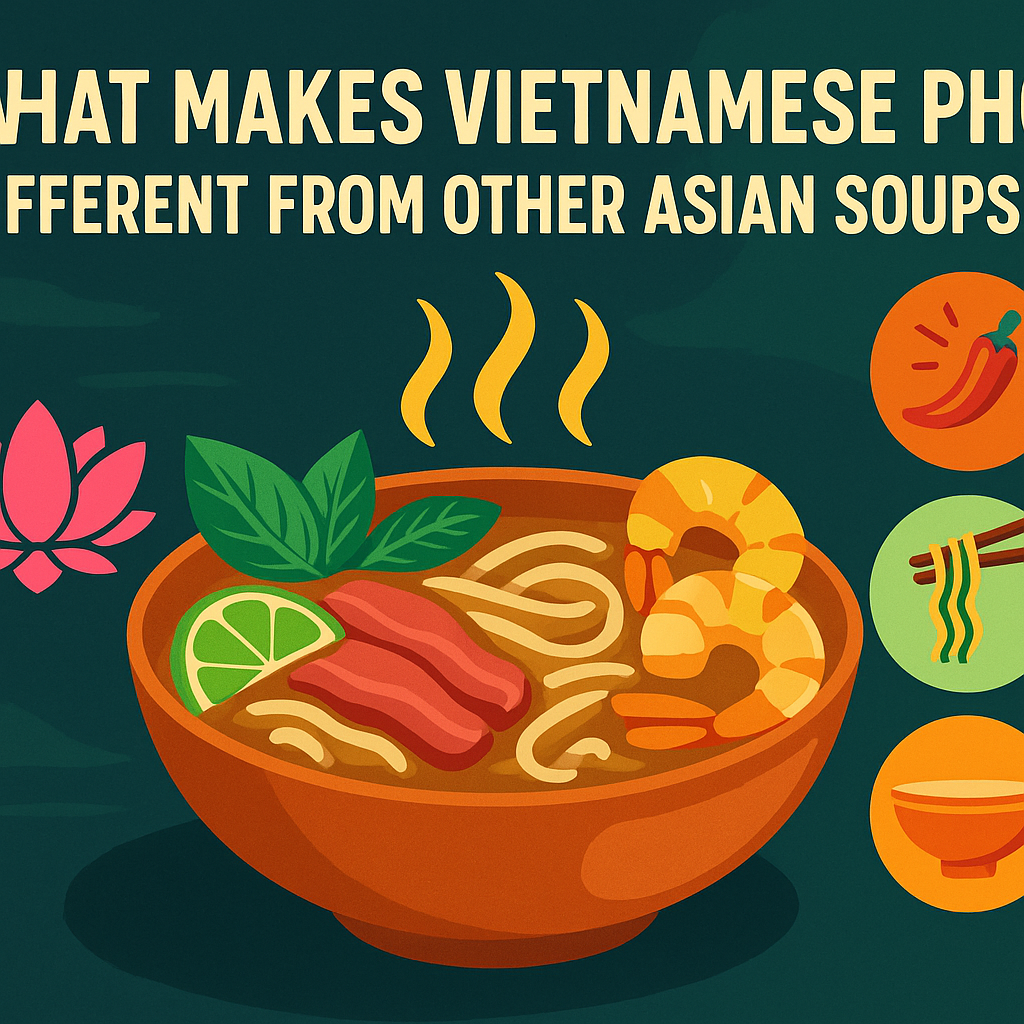
What Makes Vietnamese Pho Different From Other Asian Soups?
Vietnamese pho has earned global recognition as one of the most iconic and comforting noodle soups, yet many people still wonder: what exactly makes pho different from other Asian soups? While Japan has ramen, China has wonton soup, Thailand has tom yum, and Korea has kimchi jjigae, pho stands in a category of its own. From its delicate broth to its fresh garnishes, pho is a culinary masterpiece with a rich cultural identity.
In this guide, we’ll dive deep into the history, preparation, ingredients, and cultural context that distinguish pho from other Asian soups, while also showing how pho plays a central role in Vietnamese cuisine.
The Origins of Pho: A Vietnamese Icon
Pho traces its roots back to northern Vietnam in the early 20th century. Unlike many other Asian soups tied to centuries-old traditions, pho is relatively modern. Historians believe it was inspired by French colonial influences, particularly the pot-au-feu beef stew. Over time, Vietnamese cooks localized it with rice noodles, fragrant herbs, and their own unique broth-making techniques.
If you want to explore its history further, this detailed origin story of pho reveals how it evolved into the dish we know today.
The Defining Element: The Broth
The soul of pho is the broth. Unlike miso soup, which relies on fermented soybean paste, or tom yum, which is spicy and sour from lemongrass and lime, pho broth is crafted to be clear, aromatic, and layered with subtle flavors.
- Ingredients: Beef bones (often marrow-rich), charred onion, ginger, star anise, cinnamon, and fish sauce.
- Cooking Process: Simmered for 6–12 hours to extract deep yet clean flavors without overpowering the palate.
- Flavor Profile: Balanced, light, slightly sweet, and savory without excessive salt or spice.
This contrasts with ramen broths, which are thicker and often oily, and hot-and-sour soups, which lean on vinegar or chili paste.
For those who want to understand the health side of this broth, the healing powers of beef bone broth in pho demonstrate why pho is considered both nourishing and medicinal.
Noodles: A Clear Difference
Noodles in Asian soups vary widely—ramen uses wheat noodles, udon is thick and chewy, soba is buckwheat-based, and Thai boat noodles often include rice vermicelli. Pho is unique because it always uses flat rice noodles (bánh phở).
- Texture: Soft, silky, and slightly chewy.
- Absorption: Designed to soak up broth flavors without becoming mushy.
- Gluten-Free Nature: Unlike ramen or udon, pho noodles are naturally gluten-free, making it a favorite for those with dietary restrictions. For more details, see Vietnamese food and gluten-free options.
Fresh Herbs and Garnishes
Perhaps the most striking difference between pho and other Asian soups lies in its tableside garnishes. While Japanese or Korean soups often arrive fully seasoned, pho invites diners to customize.
Typical pho garnishes include:
- Thai basil
- Bean sprouts
- Fresh lime wedges
- Sliced chili peppers
- Cilantro and scallions
This do-it-yourself style makes pho highly adaptable, fresh, and interactive. For those interested in elevating their pho dining, explore the art of pho garnishes.
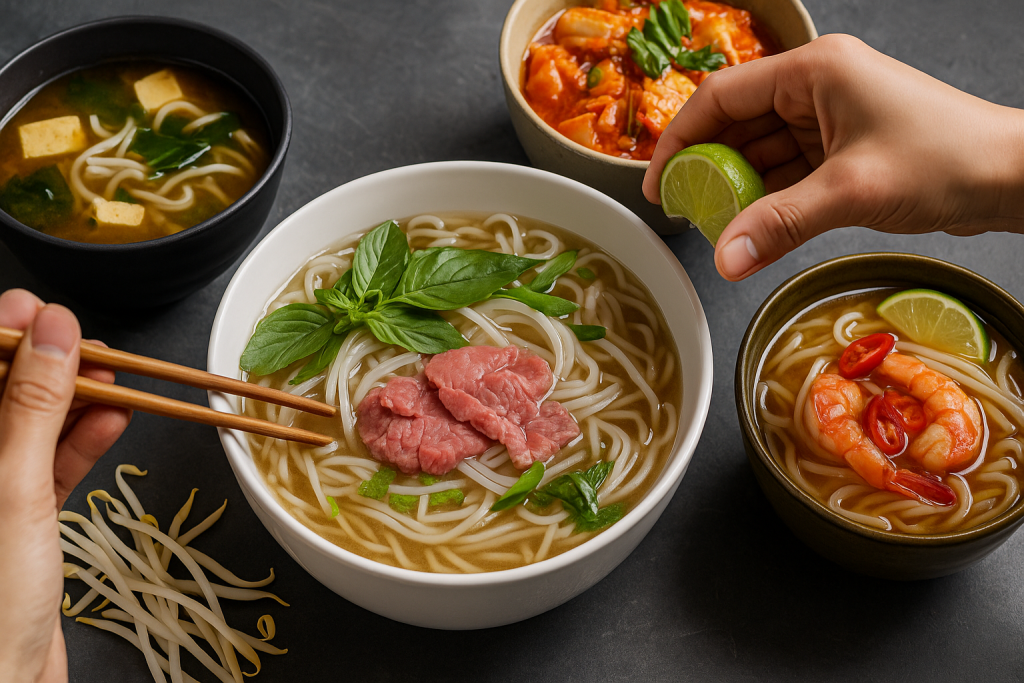
Protein Choices: More Variety Than Most Soups
Other Asian soups often stick to one protein per bowl—pork in ramen, chicken in tom kha gai, or tofu in miso. Pho, however, offers a wide spectrum of proteins:
- Rare beef slices (tái)
- Brisket
- Beef meatballs
- Chicken (phở gà)
- Seafood variations
- Vegetarian or vegan pho with mushrooms and tofu
This versatility ensures pho appeals to a broad audience, including Halal-friendly and vegetarian diners in Ottawa looking for inclusive dining options.
Flavor Philosophy: Balance Over Boldness
Asian soups like tom yum or kimchi jjigae are bold, spicy, and often dominated by one or two strong flavor notes. Pho stands apart by embodying balance and subtlety. Vietnamese cuisine emphasizes harmony—sweet, salty, sour, and umami—without overpowering heat.
This makes pho approachable to first-timers while still complex enough for culinary connoisseurs.
Pho as a Cultural Experience
Pho is more than food—it’s cultural identity. In Vietnam, pho is eaten for breakfast, lunch, or late-night comfort. Unlike ramen, which is tied to izakaya nightlife, or hotpot, which is communal, pho carries a sense of everyday nourishment and national pride.
In Ottawa, locals often regard Pho By Night as one of the best late-night pho restaurants, showcasing how pho has become part of global city culture.
Comparisons With Other Asian Soups
To clearly see the distinctions, let’s break down pho versus its counterparts:
- Pho vs. Ramen: Pho is light, clean, and fresh; ramen is heavy, oily, and salty.
- Pho vs. Tom Yum: Pho is aromatic and balanced; tom yum is fiery and sour.
- Pho vs. Wonton Soup: Pho highlights herbs and broth; wonton soup emphasizes dumplings.
- Pho vs. Kimchi Jjigae: Pho is subtle and herbaceous; jjigae is pungent and fermented.
Each has its own charm, but pho stands out for its universal appeal and customization.
Health Benefits of Pho
Unlike many heavy or oily soups, pho is widely considered a healthy comfort food. Its clear broth, fresh herbs, and lean proteins make it suitable for those seeking both flavor and wellness. The combination of collagen from beef bones, vitamin-rich herbs, and gluten-free noodles provides a nutritional edge. Learn more in this article on whether Vietnamese food is healthy.
Pho and Coffee: A Unique Vietnamese Pairing
A distinct cultural detail that separates Vietnamese cuisine from others is the pairing of pho with Vietnamese coffee. The strong, sweetened condensed milk coffee contrasts beautifully with the light broth of pho. To understand this harmony, read culinary pairing of Vietnamese coffee with food.
Why Pho Stands Out Globally
Pho is not just different—it’s adaptable, inclusive, and culturally rich. Whether enjoyed at a bustling street stall in Hanoi or at an authentic Vietnamese restaurant in Ottawa, pho’s appeal lies in its ability to comfort while reflecting centuries of tradition.
And if you are ready to explore this dish for yourself or host a pho-inspired gathering, contact Pho By Night for catering and dine-in experiences.
